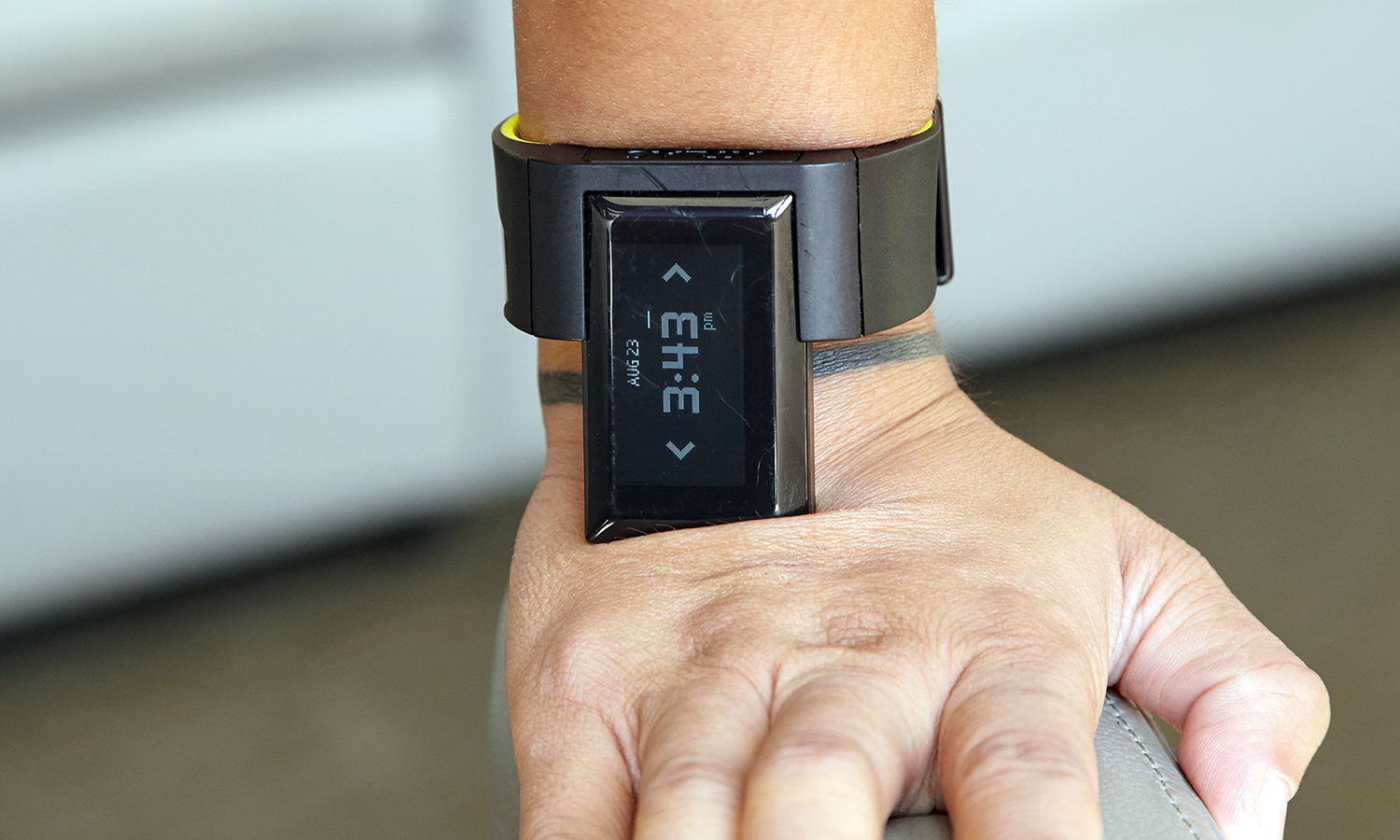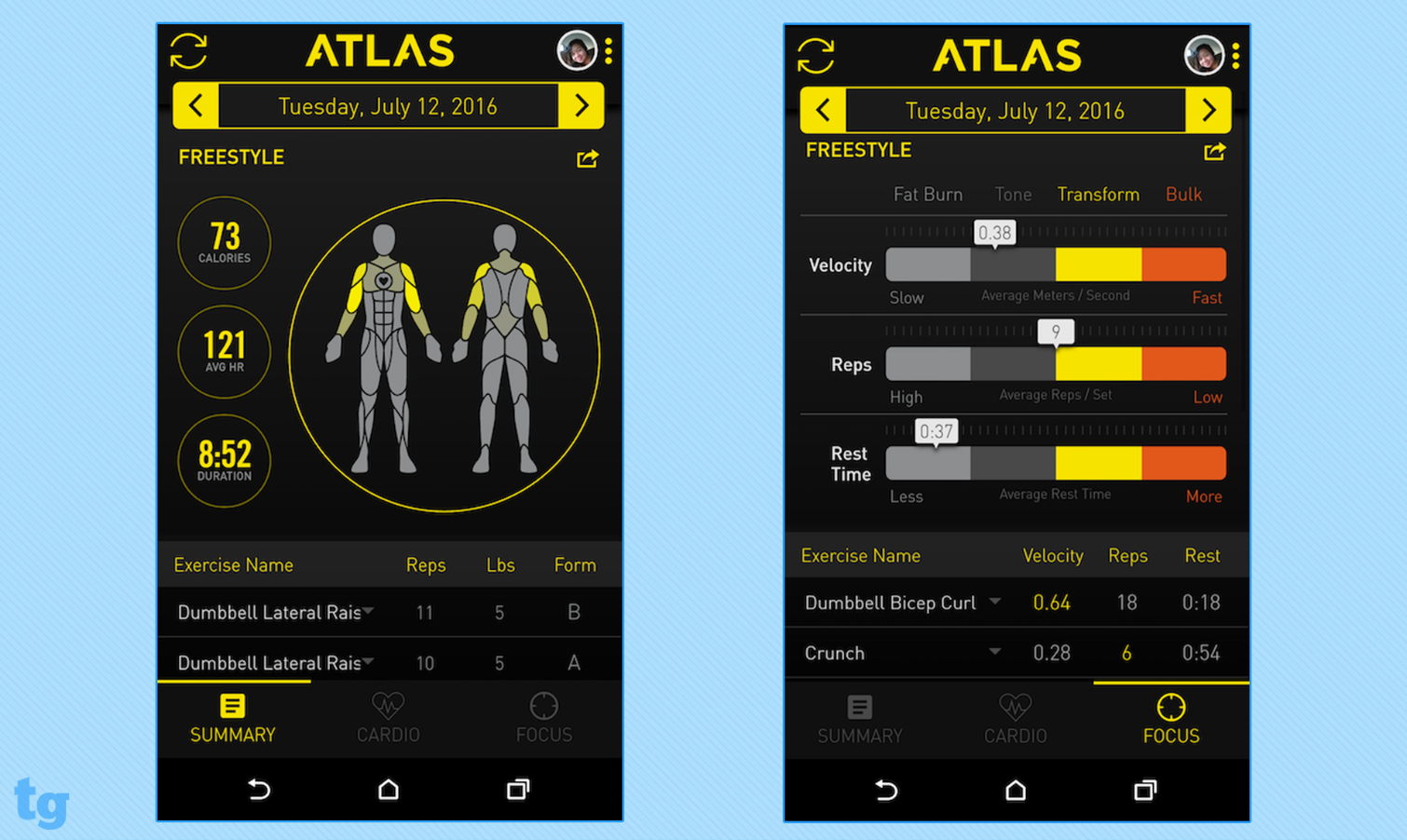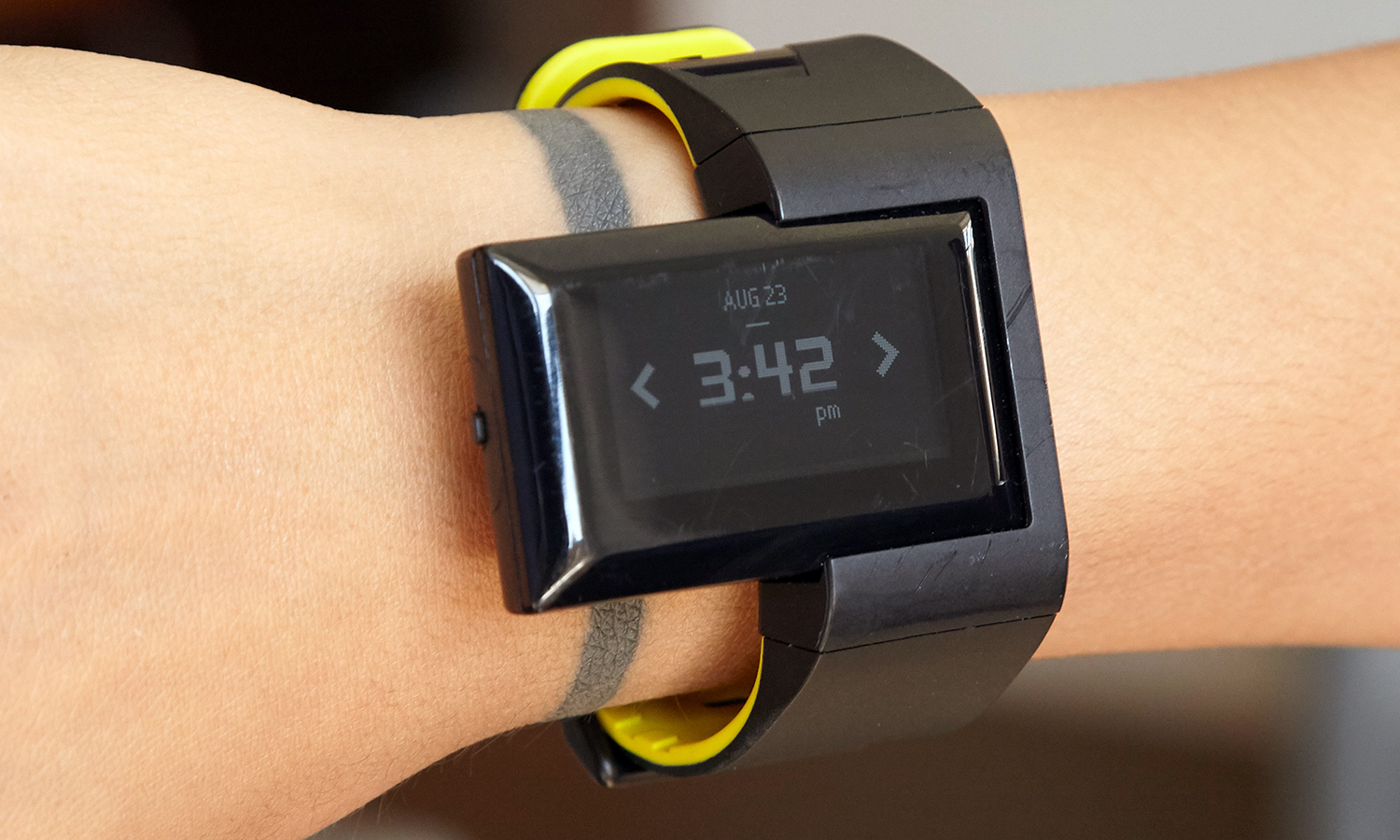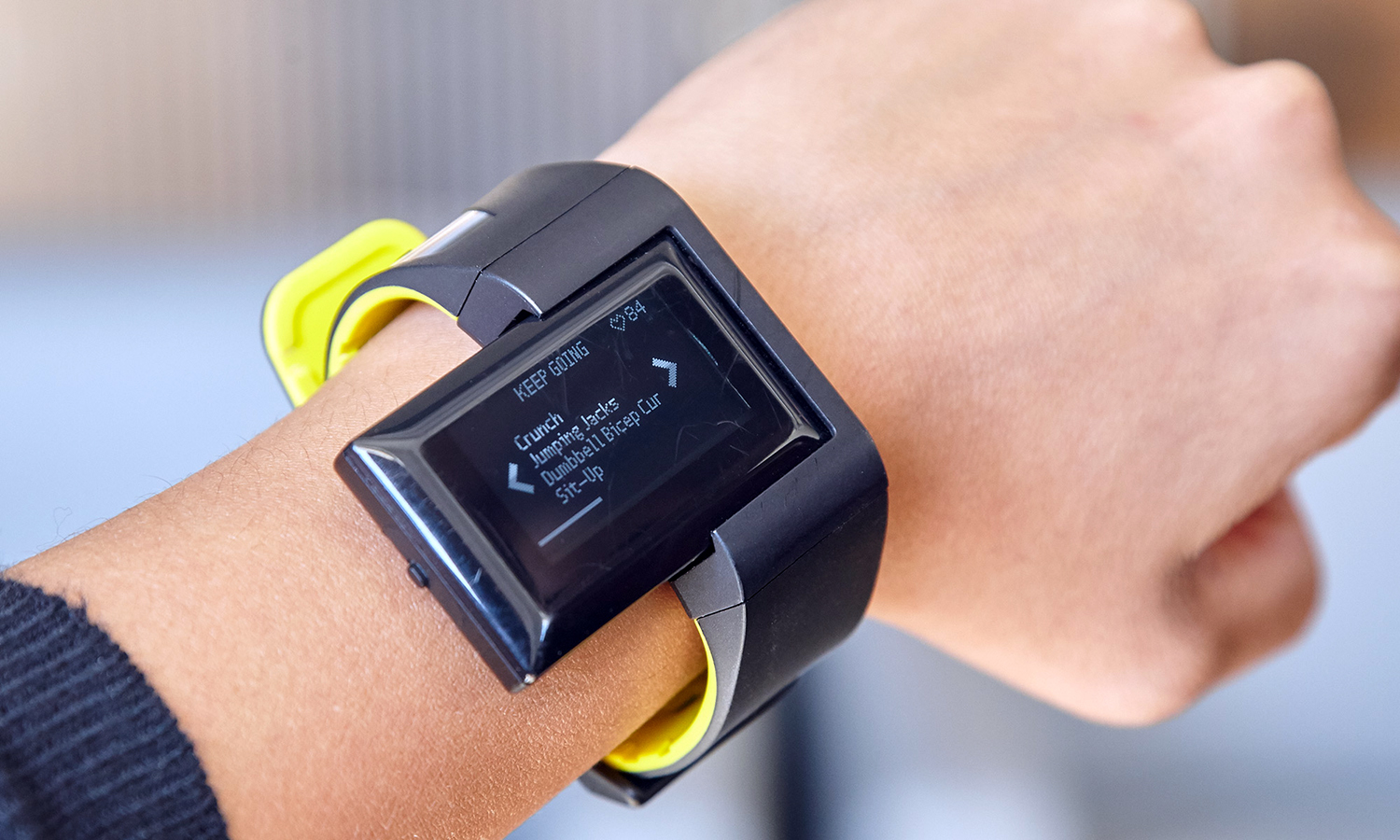Tom's Guide Verdict
Those who want to track their weight training exercises and expand their workout regimes will appreciate the Atlas Wristband 2.
Pros
- +
Recognizes more than 100 exercises
- +
Users can “teach” it to recognize new ones
- +
Provides guided workout routines and videos Micro USB charging port
Cons
- -
Bulky design
- -
Fixed screen orientation
- -
Many leg exercises can’t be tracked
- -
Only meant to be worn during a workout
Why you can trust Tom's Guide
The Atlas Wristband sets itself apart from most other fitness trackers in that it’s not meant as a general-purpose device to measure steps and sleep. Rather, this $199 wristband can detect and track more than 100 different exercises, such as a dumbbell shoulder press and a kettlebell swing, and monitor your heart rate. However, users will have to overlook a few design flaws if they want to track their every move at the gym and push their workouts to the next level.
Design
For a fitness tracker, the Atlas has an unusual design. The rectangular, tracking portion of the device clips into, and juts out from the wristband. While this makes it easy to read the display without contorting your wrist, it’s kind of awkward.
The wristband adjusts to accommodate wrists as slim as 5.2 inches or as big as 8.5 inches around, but I found this one-size-fits-all device to be bulky and uncomfortable. The tracker itself is 0.4 inches thick and the display measures 1.8 x 1.1 inches, which feels like a brick for someone with a petite build.
Atlas recommends that users wear the device on the left wrist, as you can’t change the orientation of the screen. If the tracker is worn on the right wrist, it could dig into your right hand during a pushup, for instance. Atlas says a software update, due in September or October, will allow users to rotate the screen according to their preference.
The tracker is held in place magnetically, which didn’t prove to be all that secure. When I wore it during a serene swimming pool visit with just a little bit of splashing around, the tracker detached from the wristband and sank to the bottom of the pool. Twice. Luckily it’s water resistant up to 30 meters.

Since it’s worn on your arm, the most obvious shortcoming with the Atlas tracker is its inability to track leg exercises performed while your upper body is stationary. For instance, while it can track calf raises and squats, in which the upper body actually moves, it can't track leg extensions or adductor and abductor exercises performed using machines. That means about a quarter of my usual gym workout would have to be recorded manually. But that would be the case with other wrist-worn devices as well.
One bright point on design is that the Atlas Wristband 2 can be charged with any Micro USB cable. It doesn’t require a proprietary connector, as is the case with Fitbits, for example.
MORE: Fitness Tracker Buying Guide
App
The Wristband works with the Atlas Android or iOS mobile app. Users can choose from a variety of workout styles, including CrossFit and P90X, or exercises using free weights or body weight only. You will then be prompted to select the equipment available and exercise goals for a customized guided workout.
For each exercise listed in the Atlas app, there's a written description and short video demonstrating its proper form as well as a diagram of the muscle groups that each activity targets.
Along with tracking the number of reps and the time spent resting between sets, the Atlas app shows how fast reps are performed on average and how that could translate into results like burning fat, improving muscle tone and really bulking up.
The app can also show historical data on each type of exercise performed, including the date they were performed, the maximum heart rate achieved while performing them and the weights used.

Tracking Exercise
When operating in “Freestyle Mode,” Atlas counts reps and sets by interpreting data gathered by the device’s three-axis accelerometer and three-axis gyroscope and compares them with a database of exercises and how they’re performed by personal trainers.
Videos and written descriptions in the Atlas app explain in detail how to perform exercises most effectively to get the most out of each move. They were useful, and could ultimately be cheaper than paying for personal training sessions.
In testing, rep counts of exercises already in the Atlas database disagreed with the number of reps I counted. Fifteen crunches were counted as 12, but that could have been because they weren't performed correctly. A complete crunch involves lifting the shoulder blades completely off the mat, which could account for the difference, the Atlas CEO explained. But alternating dumbbell bicep curls done quickly were interpreted as regular dumbbell bicep curls.
On thing that truly sets the Wristband 2 apart from other fitness trackers is that it can learn new exercises. If an activity isn’t among those in the Atlas database, users can perform the a few repetitions of the exercise and the device will learn to recognize it.
But during routine cardio workouts on an elliptical or treadmill, I found the bulky tracker more uncomfortable if my wrists weren't perfectly straight.

Heart Rate Monitoring
Green and amber LEDs on the underside of the tracker detect heart rate optically during both calisthenic and cardiovascular exercise.
In “Stopwatch/Cardio" mode testing, the Atlas heart rate monitor reported roughly the same heart rate as those sensed by a treadmill, elliptical machine and arc trainer equipped with heart rate monitors, but the Atlas was off by as much as 30 beats per minute on a few occasions, and took up to a minute or two to get up to speed when I switched from low intensity to higher-intensity exercise. That’s typical for many optical heart rate monitors, though.

Battery Life
The Atlas Wristband’s battery should last through three to five one-hour workouts, according to the company. There’s a “Power Save Mode,” but to best preserve battery life, the Atlas recommends that the device be powered off when it’s not being used to track a workout, a disruption for those who are used to continuous monitoring. It could take up to more than an hour to fully charge the device.
MORE: 15 Best Fitness Apps
Bottom Line
The Atlas Wristband 2 could be a good device for those who are serious about tracking their reps and sets during weight training, learning news moves and pushing past plateaus. Videos and descriptions illustrating proper form for each trackable exercise are useful for those who want to get the best results out of every movement they make at the gym. However, its bulky design and the tracker's insecure connection make it a less than ideal workout partner.
Althea Chang is Associate Director of Content Development for Consumer Reports and was previously a Senior Writer for Tom's Guide, covering mobile devices, health and fitness gadgets and car tech.

